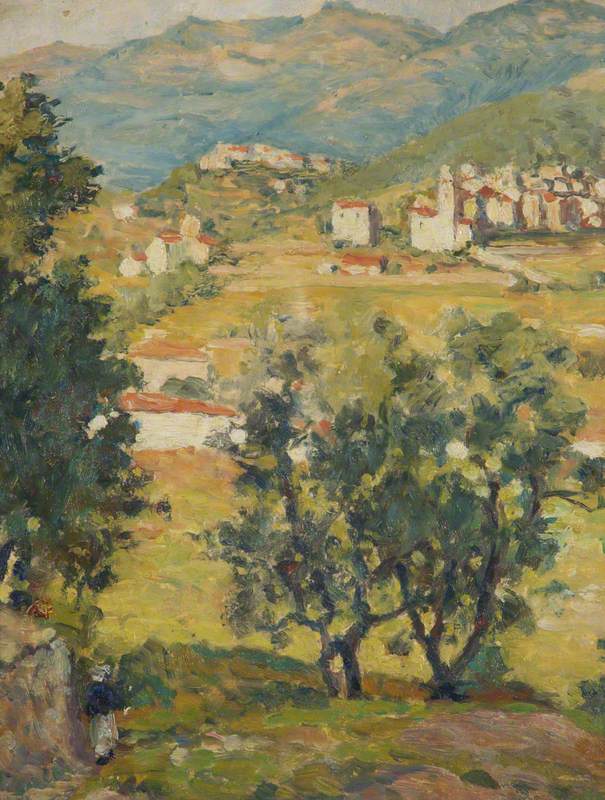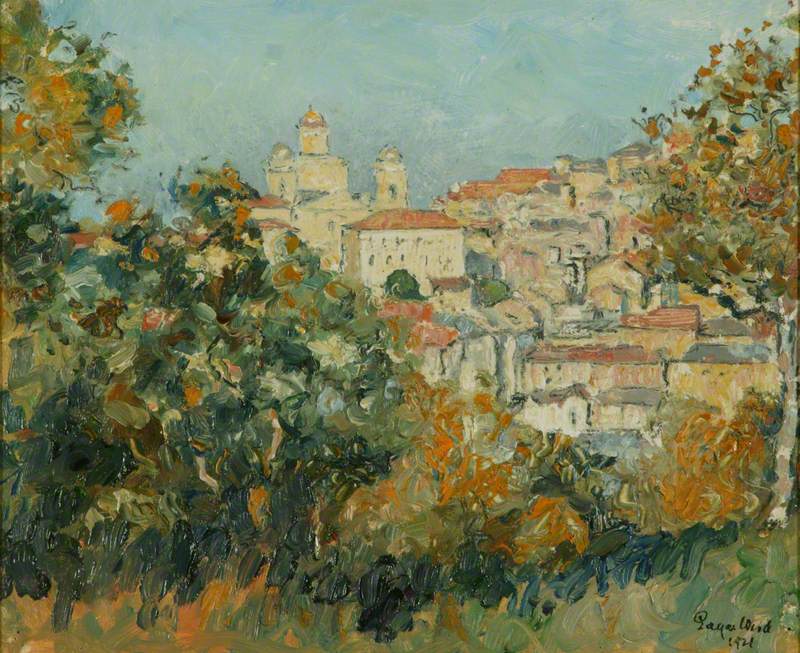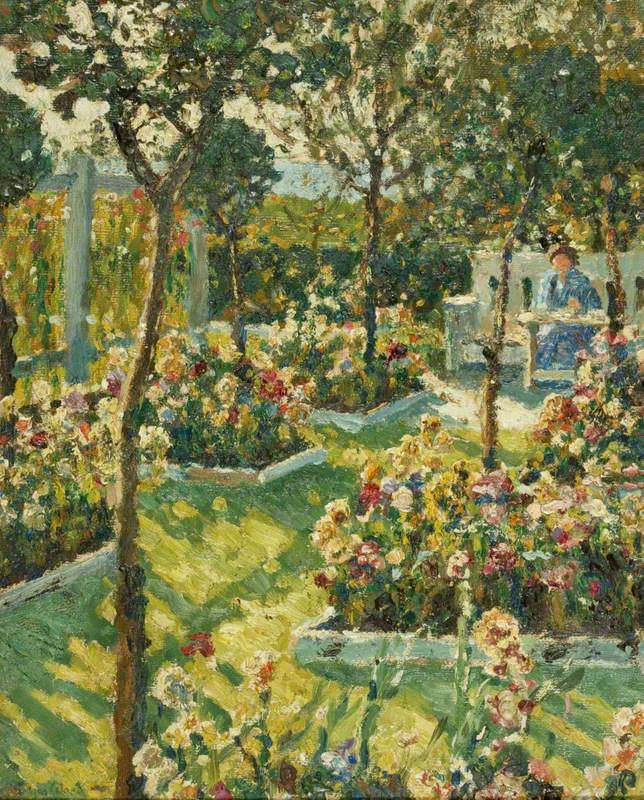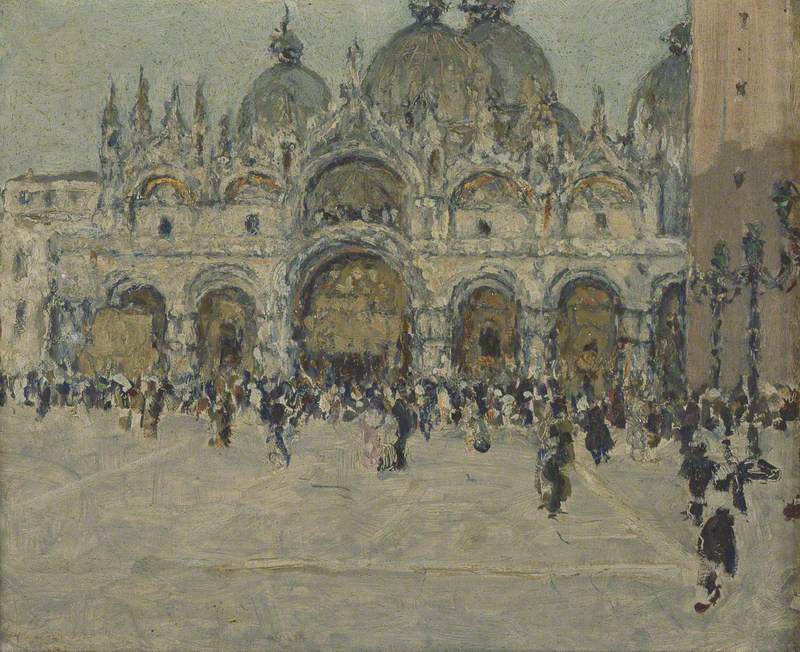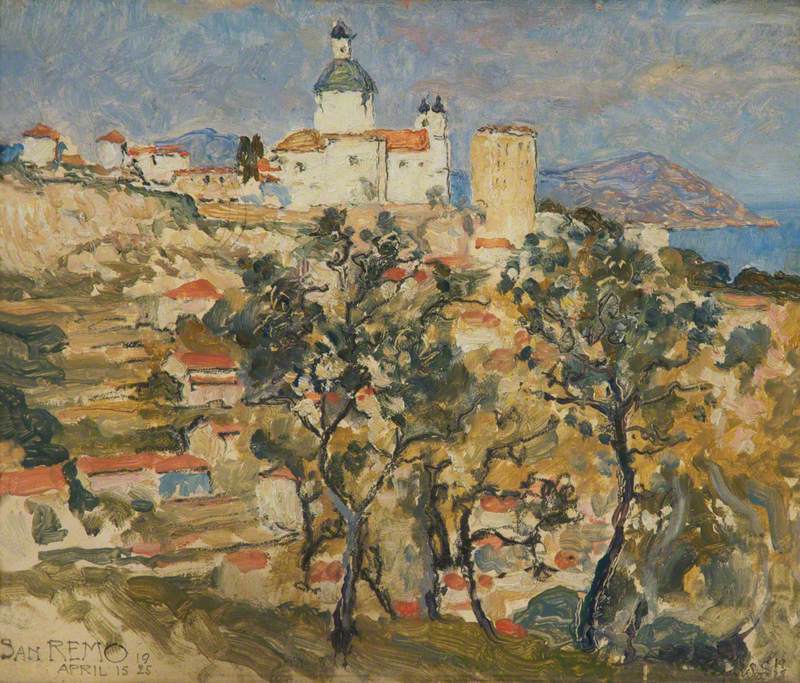
View from Campo dei Fiori, Varese, Italy c.1925
Edgar Wood (1860–1935)
Rochdale Arts & Heritage Service
Edgar Wood was born the son of a mill owner in Middleton, near Manchester, Lancashire, England, on 17 May 1860. He trained as an architect with William Mills (1814-1905) and James Murgatroyd (1830-1894) in Manchester from 1878 to 1883. Having qualified in 1885 Wood set up in private practice that year in Middleton. He moved his office to Manchester in 1892. From 1900 to 1922 Wood was in partnership with James Henry Sellers (1861-1954). Architectural projects by Wood included the Manchester and County Bank building in Long Street, Middleton (1889); Temple Street Baptist Church in Middleton (1889); the Manchester and Salford Bank building in Middleton (1892), several private houses in Middleton, Rochdale, Hale and Huddersfield (between 1891-98); Silver Street, Rochdale (1898); Long Street Wesleyan Church and Schools in Middleton (1899-1901); Banney Royd in Edgerton, Halifax (1900); alterations to Newbold Revel in Stratton-under-Fosse, Warwickshire (1900); the Clock Tower in Lindley, Huddersfield (1901-02); solicitors' offices in King Street, Oldham (1901-02); Richardson's Estate in Hale, Cheshire (1901-02); Gatehouse in Crosland Road, lidley (1902); the First Church of Christ Scientist in Victoria Park, Manchester (1903); a house at Dore in Sheffield (1904); four houses in Plane Tree Road, Hale, Cheshire (1907); the Pilkington Tiles Pavilion at the White City Exhibition on London (1908); houses for the Fairfield Moravian Settlement in Droylsden, Manchester (1913-39); and Royd House.
In addition to his work as an architect Wood designed jewellery and furniture. A photograph of a sideboard and chair in Spanish mahogany inlaid with holly and ebony, designed by Wood is featured in 'The Studio Yearbook of Decorative Art' 1906 (p.51). He was also a painter and exhibited at the Royal Academy in London.
He was elected an Associate of the Royal Institute of British Architects (ARIBA) in 1885 and a Fellow of the Royal Institute of British Architects (FRIBA) in 1911. He was a founder member of the Northern Art Workers Guild and was Master of the Guild in 1897.
Wood retired in 1922 and built a house, Port Calvario, in Port Marizio, Italy where he died on 12 October 1935. An exhibition of the work of Wood and Sellers - 'Partnership in Style: Edgar Wood and J. Henry Sellers', was held at Manchester City Art Galleries in 1978.
Text source: Arts + Architecture Profiles from Art History Research net (AHRnet) https://www.arthistoryresearch.net/
